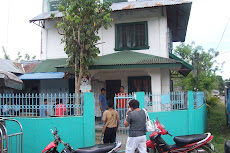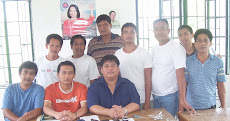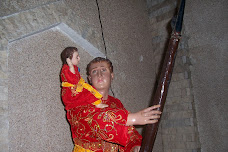In 1928, children in this remote barrio in the eastern part of the Municipality of San Pablo were given opportunity to have formal education when an elementary school consisting of a four-room Gabaldon Building was established. It was located in a 5,117 square meter lot. Primarily, San Cristobal Elementary School offered Grade I to IV levels. The only means of transportation going to the poblacion were carabao and carts. Crops were also transported to the market through paragos (carabao-drawn sled).
According to some elders, the barrio was barely affected by and remained peaceful during World War II. But most residents evacuated to Mt. San Cristobal because of their fright of Japanese soldiers that usually passed by the dirt road. After the war, all residents returned and were amazed that their houses and properties were not damaged or burned. Life in this barrio during that time was headed by Andres Avanzado who acted as Tiniente del Barrio. In 1951, a room was added at the Gabaldon Building in San Cristobal Elementary School which was utilized in the morning for Grade V and in the afternoon for Grade VI levels. A year later, a two-room Gonzales type building was constructed and used by the intermediate levels.
As years passed by, the population in this barrio grew gradually. Farming is the major source of livelihood.
There were very few residents who succeeded in their studies and became professionals. Among them are Dr. Fidel Avanzado who served as Provincial Director of Laguna in the Department of Health, Dr. Ernesto Avanzado, Dr. Remy Mauban, Dr. Eufronio Alip Phd., Atty. Igmedio Alip, Atty. Julian Alip, and Juan Alip, a school teacher who later became a school principal in San Cristobal Elementary School. Tereso Bundalian acted as Tiniente del Barrio in the early 50’s. (Source: Barangay Profile SPC-CPDO/Sandy Belarmino)
Tuesday, August 12, 2008
Subscribe to:
Post Comments (Atom)





No comments:
Post a Comment